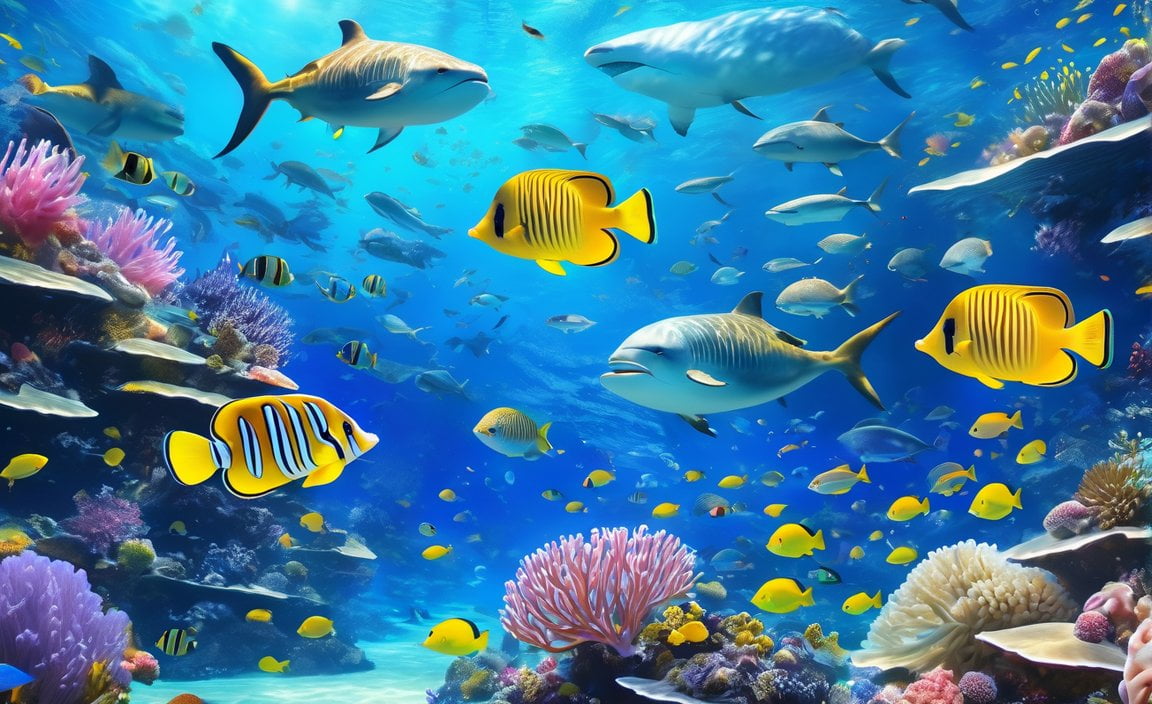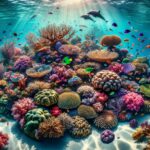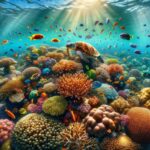Unveiling the Wonders: 10 Fascinating Facts About Sea Life
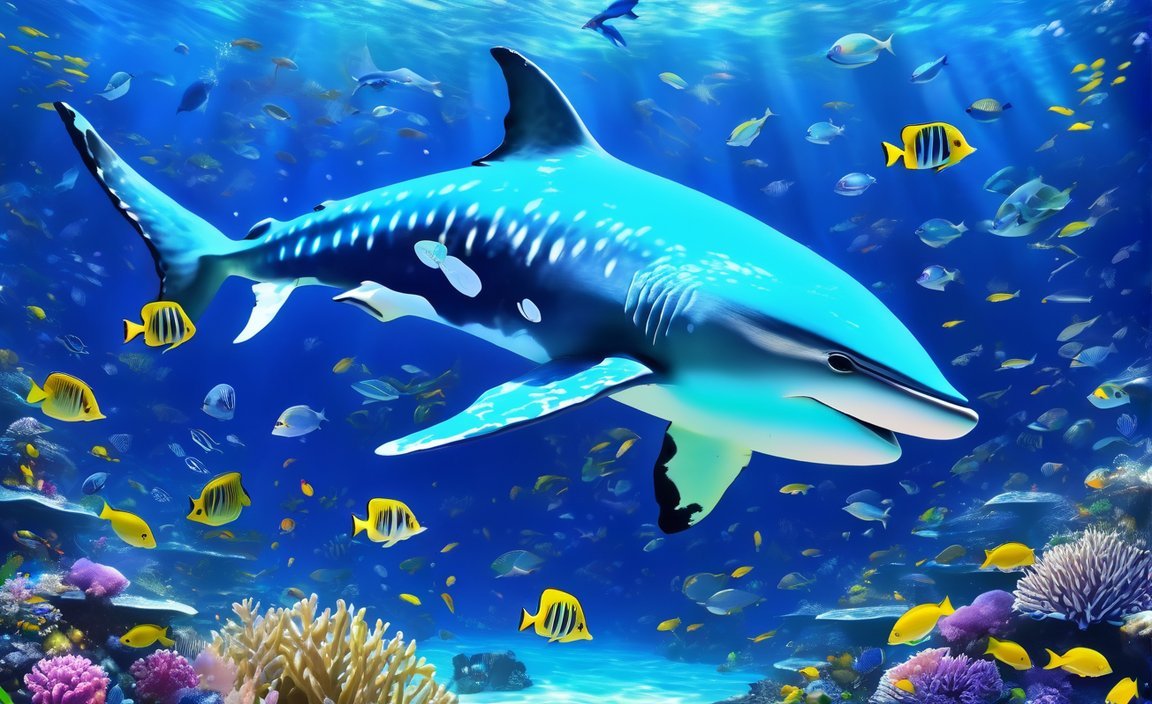
Dive into the enchanting world of sea life as we uncover 10 incredible and lesser-known facts about the mesmerizing creatures and ecosystems that inhabit our oceans. From the mysterious habits of deep-sea creatures to the intricate beauty of coral reefs, prepare to be captivated and educated by the stunning biodiversity that thrives beneath the waves. Join us on this journey as we delve into the depths and shed light on the wonders of sea life.
Key Takeaways:
- Scientists can determine the age of a fish by counting the growth rings on its scales or ear bones.
- It takes more than one 1-pound lobster to get a pound of lobster meat.
- Unlike most animals, seahorses are unique in that the male, not the female, gives birth and cares for their young.
- A shrimp’s heart is located in its head.
- Sea sponges may lack various body parts, but they are alive.
- Turtles can be found on every continent, except Antarctica.
- Approximately 70% of the Earth’s surface is covered by oceans, holding about 96.5% of all water on the planet.
- The Pacific Ocean is the largest ocean on Earth, covering around 30% of the planet’s surface.
- Nearly 80% of all life exists underwater in seas.
- The saline ecosystem of the sea provides shelter for millions of animal species.
Sources:
[^1^]: Fun Facts About Sea Life | NOAA Fisheries
[^2^]: Ocean facts! – National Geographic Kids
10 Facts About Sea Life
Sea life is filled with fascinating and unique wonders. Here, we present ten interesting facts that will amaze you:
1. Age of Fish
Scientists can determine the age of a fish by counting the growth rings on its scales or ear bones.
2. Lobster Meat
It takes more than one 1-pound lobster to get a pound of lobster meat.
3. Seahorse Parenting
Unlike most animals, seahorses are unique in that the male, not the female, gives birth and cares for their young.
4. Shrimp’s Heart
Did you know that a shrimp’s heart is located in its head?
5. Sea Sponge
Sea sponges may lack a head, mouth, eyes, feelers, bones, heart, lungs, or brain, but they are alive.
6. Turtles
Turtles can be found on every continent, except Antarctica.
7. Ocean Coverage
Approximately 70% of the Earth’s surface is covered by oceans, holding about 96.5% of all water on the planet.
8. Largest Ocean
The Pacific Ocean is the largest ocean on Earth, covering around 30% of the planet’s surface.
9. Underwater Life
Nearly 80% of all life exists underwater in seas.
10. Marine Ecosystem
The saline ecosystem of the sea provides shelter for millions of animal species.
These facts highlight the incredible diversity and importance of sea life. Now, let’s explore some reputable sources where you can learn more about this mesmerizing world beneath the waves:
With each fact, we unravel the wonders that lie beneath the surface of our vast oceans. From the intricate age rings of fish to the extraordinary parenting habits of seahorses, sea life never ceases to amaze. Take a moment to appreciate the vastness and beauty of our marine ecosystems. Dive deeper into the secrets held by the sea.
Did you know that the marine environment is filled with fascinating facts? Click here to discover 10 facts about the marine environment.10 facts about marine environment
The ocean is home to some truly incredible creatures. Dive into the fascinating world of ocean creatures by clicking here for 10 interesting facts.10 facts about ocean creatures
Curious about plant and animal cells? Unlock the secrets of these essential building blocks of life with these 10 intriguing facts. Click here to learn more.10 facts about plant and animal cells
Embark on a thrilling adventure into the wild and discover 10 amazing facts about wild animals. Click here to start your journey.10 facts about wild animals
The Underestimated Intelligence of Octopuses: Masters of Disguise and Problem-Solving
Octopuses, those enigmatic and fascinating creatures that inhabit the depths of the ocean, hold a level of intelligence that is often underestimated. With their exceptional learning, memory, and problem-solving abilities, these cephalopods have captured the curiosity of scientists and explorers alike. In this article, we will delve into the astonishing world of octopuses and unveil their remarkable intelligence, making them the masters of disguise and problem-solving.
Octopuses: Close Encounters with Intelligent Aliens
Octopuses belong to a group of invertebrates called cephalopods, which also includes squid and cuttlefish. With their bulbous heads, large eyes, and eight arms, they possess a unique and mesmerizing appearance. It is no wonder that octopuses are often likened to meeting intelligent aliens.
Camouflage: A Marvelous Defense Mechanism
One of the most captivating aspects of octopuses’ intelligence is their mastery of camouflage. They have the incredible ability to modify the color and texture of their skin to imitate their surroundings. This astonishing skill helps them avoid predators and blend seamlessly into their environment.
Problem-Solving Prowess: A Different Pathway to Intelligence
While octopuses’ problem-solving abilities rival those of corvids, parrots, and primates, their approach to information processing is entirely unique. Scientists believe that their exceptional intelligence is due to their large nervous systems, including their relatively large brains. The cognitive abilities of octopuses have evolved over millions of years, with their last common ancestor with humans dating back over 500 million years.
A Glimpse into Cognitive Complexity
Octopuses exhibit complex behaviors and are capable of performing elaborate tasks. Their cognitive abilities are said to approach those of some small mammals. However, the exact mechanisms behind octopuses’ intelligence are still a subject of study, and scientists continue to explore how they developed such remarkable cognitive skills.
Key Takeaways:
- Octopuses are known for their exceptional intelligence, including their learning, memory, and problem-solving abilities.
- Their ability to camouflage by modifying the color and texture of their skin is truly remarkable.
- Octopuses’ unique problem-solving skills differ from other intelligent animals, but the exact reasons behind their intelligence are still being investigated.
- With their large nervous systems and brains, octopuses have evolved over millions of years to become masters of disguise and problem-solving.
Sources:
1. The Mind of an Octopus | Scientific American
2. Suckers for learning: why octopuses are so intelligent – The Conversation
The Remarkable Ecological Role of Coral Reefs: Guardians of Coastal Communities
Coral reefs are more than just beautiful underwater landscapes. These vibrant ecosystems play a crucial role in protecting coastal communities and supporting a diverse range of marine species. Let’s dive deep into the fascinating facts about coral reefs and their remarkable ecological role.
10 Surprising Facts About Coral Reefs
A vibrant hub of biodiversity: One of the most astonishing facts about coral reefs is that they are home to approximately a quarter of all marine species[^1^]. These stunning ecosystems teem with life, showcasing the incredible diversity of marine organisms.
Coral reefs: Animal, not plant: Contrary to popular belief, corals are not plants but colonies of small animals called polyps[^1^]. These polyps secrete calcium carbonate to form the vibrant coral structures we admire.
Sustenance for millions: More than half a billion people worldwide rely on coral reefs as a crucial source of food and income[^1^]. These reefs support local fishing communities and provide sustenance for coastal populations.
Sunlight: A crucial ingredient for growth: Coral reefs thrive in warm, shallow waters where sunlight can penetrate. Sunlight is essential for the photosynthetic algae called zooxanthellae, which live symbiotically within the coral and provide food through photosynthesis[^1^].
Heat: A deadly threat: Excessive heat can be detrimental to the health of coral reefs, leading to coral bleaching and death[^1^]. Rising sea temperatures due to climate change pose a significant threat to these fragile ecosystems.
Natural storm barriers: Coral reefs act as natural buffers, protecting coastal communities from the devastating impact of storms and strong waves[^1^]. They absorb and dissipate the energy of waves, providing a vital defense for coastal areas.
Nature’s water filter: Coral reefs contribute to the purification of coastal waters. They filter sediments and pollutants, ensuring cleaner, clearer waters for marine life and humans alike[^1^].
Economic powerhouse: Coral reefs are a driving force behind tourism in many coastal communities. Their stunning beauty attracts snorkelers, divers, and nature enthusiasts, boosting local economies[^1^].
Natural safeguards against disasters: By safeguarding coral reefs and coastal wetlands, nations can enhance their defenses against storms, flooding, and other natural disasters[^2^]. These natural features provide vital protection for coastal communities and promote overall resilience.
A habitat for interconnected ecosystems: Coral reefs serve as physical buffers for oceanic currents and waves, creating a suitable environment for the growth of other crucial habitats like seagrass beds and mangroves[^3^]. These interconnected ecosystems contribute to the overall balance and health of the marine environment.
Key Takeaways:
- Coral reefs are biodiversity hotspots, hosting a quarter of all marine species[^1^].
- They provide sustenance for over half a billion people worldwide[^1^].
- Sunlight is crucial for the growth and survival of coral reefs[^1^].
- Rising sea temperatures pose a significant threat to coral reefs[^1^].
- Coral reefs act as natural storm barriers, protecting coastal communities[^1^].
- They play a vital role in water purification[^1^].
- Coral reefs are an economic powerhouse, driving tourism in coastal areas[^1^].
- Protecting coral reefs and coastal wetlands enhances natural safeguards against disasters[^2^].
- Coral reefs create habitats for interconnected ecosystems like seagrass beds and mangroves[^3^].
- Biodiversity in coral reefs is crucial for maintaining ecosystem function[^4^].
To learn more about coral reefs and their importance, you can visit the following sources:
- The Reef-World Foundation
- Pew Trusts – Coral Reef and Coastal Wetlands Protections Can Help Communities
These sources provide valuable insights into the remarkable ecological role of coral reefs and their importance in safeguarding coastal communities.
The wonders of sea life extend far beyond our imagination. From the vibrant beauty of coral reefs to the astonishing variety of marine species they support, our oceans hold endless marvels waiting to be explored. Let us embrace our role as stewards of the sea and protect these fragile ecosystems for generations to come.
The Deep-Sea Mystery: Strange and Unknown Creatures Thriving in the Abyss
The deep sea holds a wealth of mysterious and unknown creatures that continue to captivate researchers and spark the imagination. From shapeshifting fish to ghostly jellies and stunning cephalopods, the abyss is home to a variety of unique and bizarre creatures that defy our understanding. This article delves into the fascinating world of deep-sea life, where remarkable adaptations and extraordinary diversity thrive in the face of unforgiving conditions.
The Incredible Diversity of Deep-Sea Life
The deep sea, with its crushing pressures, pitch-black darkness, limited food supply, and freezing temperatures, presents an extreme environment that few organisms can survive. Despite these challenges, deep-sea creatures have developed extraordinary adaptations that allow them to thrive. Some remarkable examples include creatures with no eyes that produce their own light through bioluminescence, such as the deep-sea anglerfish and the vampire squid.
Unveiling the Deep-Sea Discoveries of 2021
Every year, researchers unveil new and alien-looking creatures from the depths of the abyss. In 2021 alone, a number of strange and unknown species were added to the list of deep-sea discoveries. The Japanese spider crab, with its long legs and colossal size, continues to astound scientists. The peanut worm, a peculiar and worm-like creature, showcases the incredible and sometimes bizarre forms that life can take in the deep sea. And let’s not forget the red coffinfish, with its unique, coffin-like shape and striking red coloration.
The Enigmatic Habits and Adaptations of Deep-Sea Creatures
Deep-sea creatures often possess unusual physical characteristics that set them apart from their shallow-water counterparts. Bulging eyes, rough sandpaper-like skin, and hinged teeth are just a few examples of the adaptations these organisms have developed to navigate and survive in their dark and harsh environment. They possess features honed over millions of years of evolution that enable them to find food, reproduce, and avoid predators.
The Unexplored Frontiers of the Abyss
Despite these astonishing discoveries, the deep sea remains largely unexplored, leaving countless mysteries waiting to be unraveled. With approximately 80% of all life existing underwater, the oceans hold an immense potential for further discovery and understanding. The secrets hidden within the depths of the abyss continue to beckon researchers and explorers alike, sparking excitement and wonder as we strive to uncover the truth about the strange and unknown creatures thriving in this enigmatic world.
Key Takeaways:
– The deep sea is home to a variety of strange and unknown creatures.
– Deep-sea creatures have extraordinary adaptations that allow them to survive in extreme conditions.
– New species are discovered in the deep sea every year.
– Deep-sea creatures often possess unusual physical characteristics.
– The deep sea remains largely unexplored, holding countless mysteries yet to be discovered.
Sources:
– 10 weird creatures found in the deep sea in 2021, Live Science
– New weird and scary deep-sea creatures discovered in Australian Abyss, Wired UK
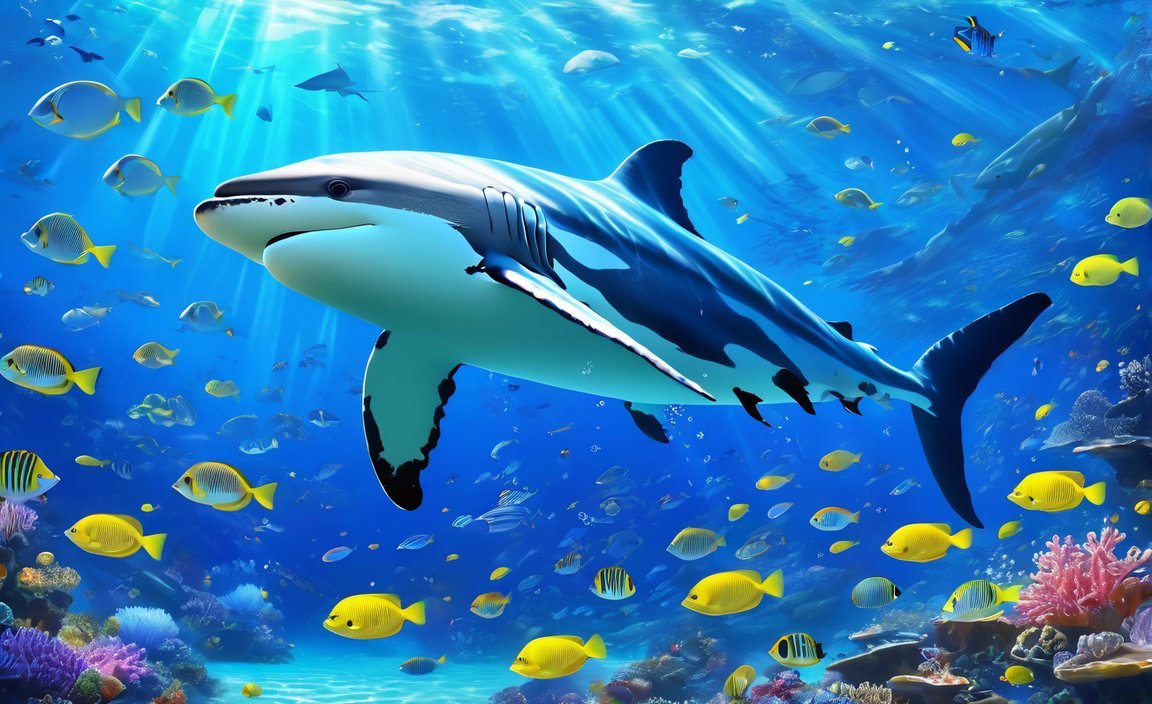
FAQ
Q1: How do scientists determine the age of a fish?
A1: Scientists can determine the age of a fish by counting the growth rings on its scales or ear bones. This method allows them to estimate the age of the fish based on its growth patterns.
Q2: Are seahorses known for their unique parenting behavior?
A2: Yes, seahorses have a unique parenting behavior. Unlike most animals, the male seahorse is the one who gives birth and cares for their young. The female seahorse deposits her eggs into the male’s pouch, where they are fertilized and develop until they are ready to be born.
Q3: Where is a shrimp’s heart located?
A3: Surprisingly, a shrimp’s heart is located in its head. This unusual anatomical feature is one of the interesting facts about these fascinating crustaceans.
Q4: How much of the Earth’s surface is covered by oceans?
A4: Approximately 70% of the Earth’s surface is covered by oceans. These vast bodies of water hold about 96.5% of all the water on the planet, making them a dominant feature of our planet.
Q5: What percentage of life exists underwater in seas?
A5: Nearly 80% of all life exists underwater in seas. The ocean is teeming with a diverse range of organisms, from microscopic plankton to large marine mammals, creating a thriving ecosystem beneath the waves.
